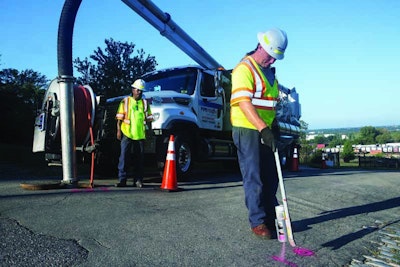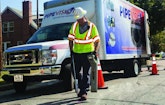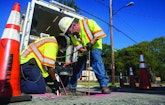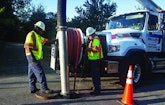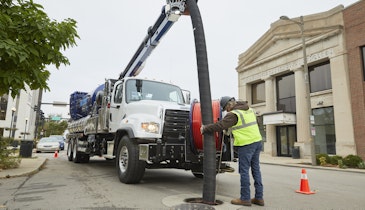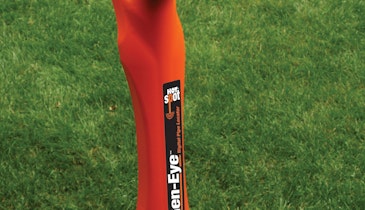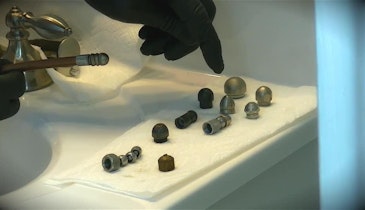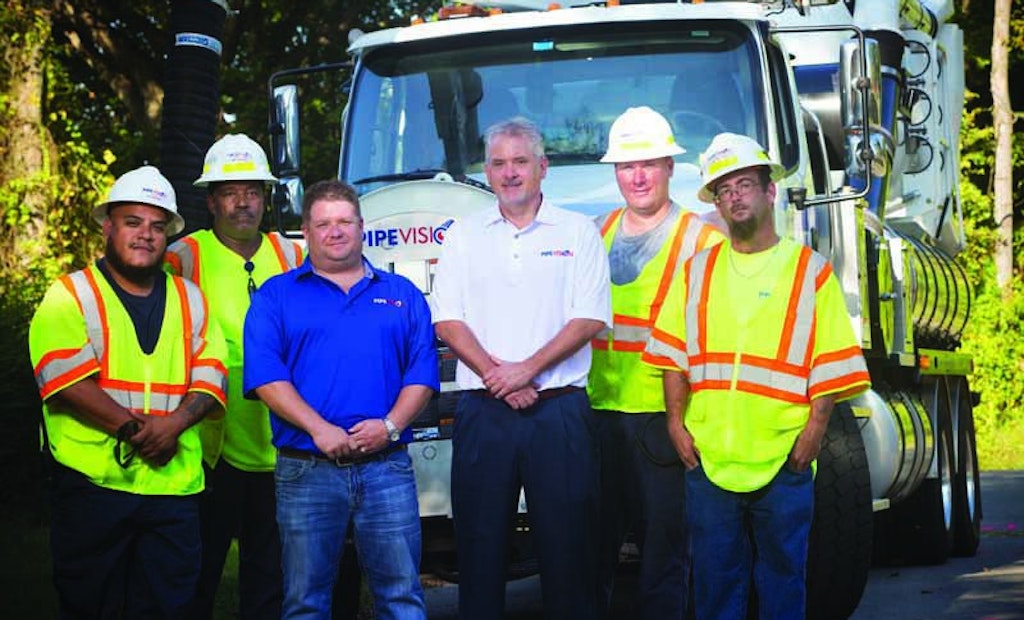
Interested in Trucks?
Get Trucks articles, news and videos right in your inbox! Sign up now.
Trucks + Get AlertsEver since Pipevision opened its doors in 2010, the pipeline inspection and rehab company has operated on a singular principle: continually invest in reliable, top-notch equipment that significantly improves productivity and keeps customers satisfied.
Based in Ashland, Virginia, the company — a wholly owned subsidiary of Accumark Inc., a subsurface utility locating and services company — has invested more than $3 million in equipment since its inception. Coupled with an emphasis on highly trained and professionally certified employees, this two-pronged strategy has enabled the company to grow exponentially from just one camera truck and one vacuum truck to a large fleet of equipment in just five years, says Craig Martin, president and co-owner of the company. The other co-owner, Dan Clatterbuck, serves as vice president.
“Our business on the camera side (Pipevision) has grown more than 400 percent in the last five years,” Martin says. The key to such rapid growth? “Building relationships,” he says. “People trust that we’ll do a good job for them — that we’ll be on time and charge a fair market price. And provide high-quality work.”
“We’re constantly reinvesting in equipment,” Clatterbuck adds. “We’re always trying to find the best equipment that can help us limit confined-space entry and optimize time in the field — get as much done as possible in the shortest amount of time. Ultimately, that allows us to provide clients with very competitive prices. In addition, newer equipment breaks down less frequently, which increases customer satisfaction.”
Four 2100 PD combination sewer vacuum trucks built by Vactor Manufacturing (a subsidiary of Federal Signal Corp.) form the backbone of the company’s equipment fleet. The units are built on tandem-axle truck chassis made by International, Kenworth and Freightliner. Each truck features a 12-cubic-yard debris tank, a 1,500-gallon water tank, a water pump that generates pressure of 2,000 psi and flow of 80 gpm, and a 5,000 cfm blower built by Roots Systems. In addition, two of the trucks are equipped with hydroexcavation packages, which help crews install clean-outs more efficiently, Martin says.
The company’s motto is, “Discover the unexpected.” To accomplish that, Pipevision also invests heavily in pipeline inspection camera systems from Envirosight. That includes four CCTV camera trucks outfitted by Envirosight; three Rovver X SAT lateral launch cameras; one Rovver 125 crawler camera; three VeriSight Pro push cameras; several QuickView pole cameras, which minimize the need for confined-space entry; and four JetScan high-definition cameras that fit on the end of the vacuum trucks’ jetting nozzles, providing dual inspection/cleaning capability.
Work in the municipal sector generates about 40 percent of the company’s annual gross revenue. That includes a large on-call contract with the City of Richmond. The balance stems from work performed for land development companies, industrial facilities and general contractors that install water and sewer lines.
A quick start
Pipevision was born after Accumark officials decided to diversify the company’s subsurface inspection services. In 2010, Martin and Clatterbuck decided to make Pipevision a stand-alone company.
“Getting started wasn’t all that difficult,” Martin says, noting that the company relied on the same formula that made Accumark successful: fair pricing and great customer service. “We came out of the gates running. The biggest challenge was just getting our name out there, but it helped that we were able to leverage our existing customer base. That’s what enabled us to get things going … gave us the confidence to buy our first vacuum truck and start building from there.”
Two other factors converged to jump-start Pipevision’s growth: aging water and sewer infrastructure in the areas the company serves (Virginia, Maryland, North Carolina and Washington, D.C.), coupled with an improving economy that’s spurring land development — and the underground infrastructure that accompanies that development, Clatterbuck says.
Investments in new, technologically advanced equipment also help the company attract new clients. “The appearance of your equipment when you come on a job site speaks to quality of work and the quality of the employees you have working for you,” Clatterbuck says. “I remember a trial run we did with a lining company for which we now do a lot of work. We went out on the job with our best equipment, and now we have a contract to work for them.
“They were ecstatic when they saw our equipment because the company they used before had equipment with hydraulic oil leaks,” he adds. “Sometimes that equipment would run and sometimes it wouldn’t.”
Advanced technology
Moreover, customers are impressed when a contractor can provide convenient services such as live video feeds of pipeline inspections, an advanced feature on some Envirosight camera systems. Operators can also email videos to clients right after inspections. “That way, even if the client is out of state, they can quickly start an action plan without any delays,” Clatterbuck explains.
Furthermore, project delays are a profitability and goodwill killer for any contractor. “If you miss a deadline in a time-critical project, it doesn’t look good for anybody,” he says. “I’d say that probably 90 percent of our work requires us to get in and get out as quickly as possible. We can’t afford breakdowns.”
To keep projects running on schedule, the company also focuses on making sure all employees can operate the same equipment. For example, all field employees can operate the various inspection camera systems, so projects aren’t delayed if one employee calls in sick or has to leave work early, Clatterbuck says. “We can keep on working and meet the finish dates for our clients,” he notes.
A stable of great equipment offers another benefit, too: It helps the company attract and retain good workers. “We think it’s very important to provide our people with the best equipment we can find,” Martin explains. “Typically, if you give people good equipment to work with that doesn’t break down all the time, they stay motivated to provide quality work.”
One particularly difficult project underscores the benefits of investing in quality equipment, Clatterbuck says. The project centered on 2,500 feet of 54-inch-diameter, state-owned pipe that was continually backing up during heavy rains, which produced ponding on a nearby roadway. The pipeline was located in a swampy area that made access extremely difficult.
But Pipevision had the right equipment to get the job done, including a Gator all-terrain vehicle, made by Deere & Co., that was able to negotiate the swampy terrain and carry a Rovver X inspection camera out to hard-to-access manholes.
“They thought the problem was a maintenance issue involving tree root intrusions, but an inspection revealed that the pipe itself needed to be relined,” Clatterbuck recalls.
“Some of the pipe joints had slipped and dropped down, so there was a lot of groundwater infiltrating the pipe.”
Good outlook
As for the future, Martin and Clatterbuck envision further growth but in a measured and controlled fashion, nothing like the exponential business increase the company has experienced during the last five years or so. “We would like to broaden our client list a little bit and aside from that, just keep going, going and going,” Clatterbuck says.
